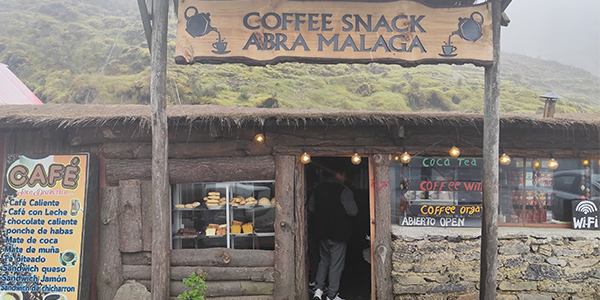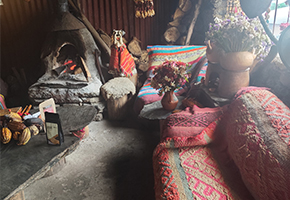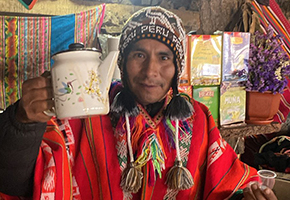Understanding the Challenge of the Salkantay Trek
The Salkantay Trek difficulty level is one of the most common questions asked by travelers planning this adventure. Known as the best alternative to the Inca Trail, the Salkantay route combines high-altitude passes, mountain landscapes, and jungle trails. While it is accessible to most hikers with preparation, it does require good physical condition and acclimatization to the altitude.
How Difficult Is the Salkantay Trek?
The trek is classified as moderate to challenging. Over the course of five days, hikers cover approximately 72 km (45 miles). The most demanding section is the second day, when you cross the Salkantay Pass at 4,650 meters (15,255 feet). The high elevation, steep ascent, and changing weather conditions make this part of the journey the toughest.
Factors That Affect the Difficulty
1. Altitude
The high elevation is the main challenge. Altitude sickness can cause headaches, fatigue, and shortness of breath. Spending a few days in Cusco before starting the trek is highly recommended.
2. Distance and Duration
On average, hikers walk 6–8 hours per day. Some sections involve steep climbs, while others are downhill stretches that require strong knees and balance.
3. Weather Conditions
The Salkantay region has unpredictable weather. Trekkers may face sun, rain, wind, or even snow in the same day. Proper clothing and gear are essential to face these conditions.
4. Fitness Level
The trek is suitable for people with moderate physical fitness. Previous hiking experience is helpful but not mandatory. With determination and preparation, most travelers can complete it successfully.
How to Prepare for the Salkantay Trek
Acclimatize in Cusco for at least 2–3 days before starting.
Train with cardio and endurance exercises before your trip.
Pack light but include essentials like warm clothes, rain gear, and good trekking shoes.
Stay hydrated and carry snacks for energy during long walks.
What you should do before booking Salkantay Trek to Machu Picchu
1. What is the Salkantay Trek, and how does it compare to the Inca Trail?
The Salkantay Trek is an alternative route to Machu Picchu, offering breathtaking landscapes, including snow-capped mountains, cloud forests, and high-altitude passes. Unlike the Inca Trail, the Salkantay Trek does not require a permit and is less crowded, providing a more adventurous experience.
2. How many days does the Salkantay Trek take to reach Machu Picchu?
The standard Salkantay Trek takes 5 days and 4 nights, covering approximately 72 km (45 miles). However, there are shorter and longer variations of the trek available.
3. What is the difficulty level of the Salkantay Trek?
The Salkantay Trek is considered moderate to challenging, as it involves hiking at high altitudes and steep ascents. The highest point is the Salkantay Pass at 4,650 m (15,255 ft). Proper acclimatization is recommended before starting the trek.
4. Do I need a permit to hike the Salkantay Trek?
No, unlike the Inca Trail, the Salkantay Trek does not require a special permit. However, you do need an entrance ticket for Machu Picchu, which should be booked in advance.
5. What is the best time of year to hike the Salkantay Trek?
The best time to hike the Salkantay Trek is during the dry season (April to October). The weather is more stable, with clear skies and less rain. The rainy season (November to March) can make the trail muddy and challenging.
6. What should I pack for the Salkantay Trek?
Essential items include:
- Hiking boots (waterproof and comfortable)
- Warm layers (temperatures drop at night)
- Rain jacket or poncho
- Sleeping bag (suitable for cold weather)
- Sun protection (hat, sunglasses, sunscreen)
- Water bottle and purification tablets
- Basic first aid kit
7. Is altitude sickness a concern on the Salkantay Trek?
Yes, altitude sickness can be an issue, especially at the Salkantay Pass (4,650 m). It is recommended to spend a few days in Cusco (3,400 m) before the trek to acclimatize. Staying hydrated, avoiding alcohol, and chewing coca leaves can help with symptoms.
8. How do I get to Machu Picchu from the end of the Salkantay Trek?
After reaching Hidroelectrica, you have two options:
- Hike 3 hours to Aguas Calientes.
- Take a 30-minute train from Hidroelectrica to Aguas Calientes.
From Aguas Calientes, you can hike or take a bus up to Machu Picchu.
9. Are there accommodation options along the Salkantay Trek?
Yes, most trekking companies provide campsites or eco-lodges along the route. Some upgraded tours offer more comfortable accommodations, such as glass cabins or domes. The final night is usually spent in a hotel in Aguas Calientes.
10. Can I visit Machu Picchu without hiking the Salkantay Trek?
Yes, you can take a train from Cusco to Aguas Calientes, followed by a short bus ride or hike up to Machu Picchu. This is the most popular option for visitors who prefer not to hike.




